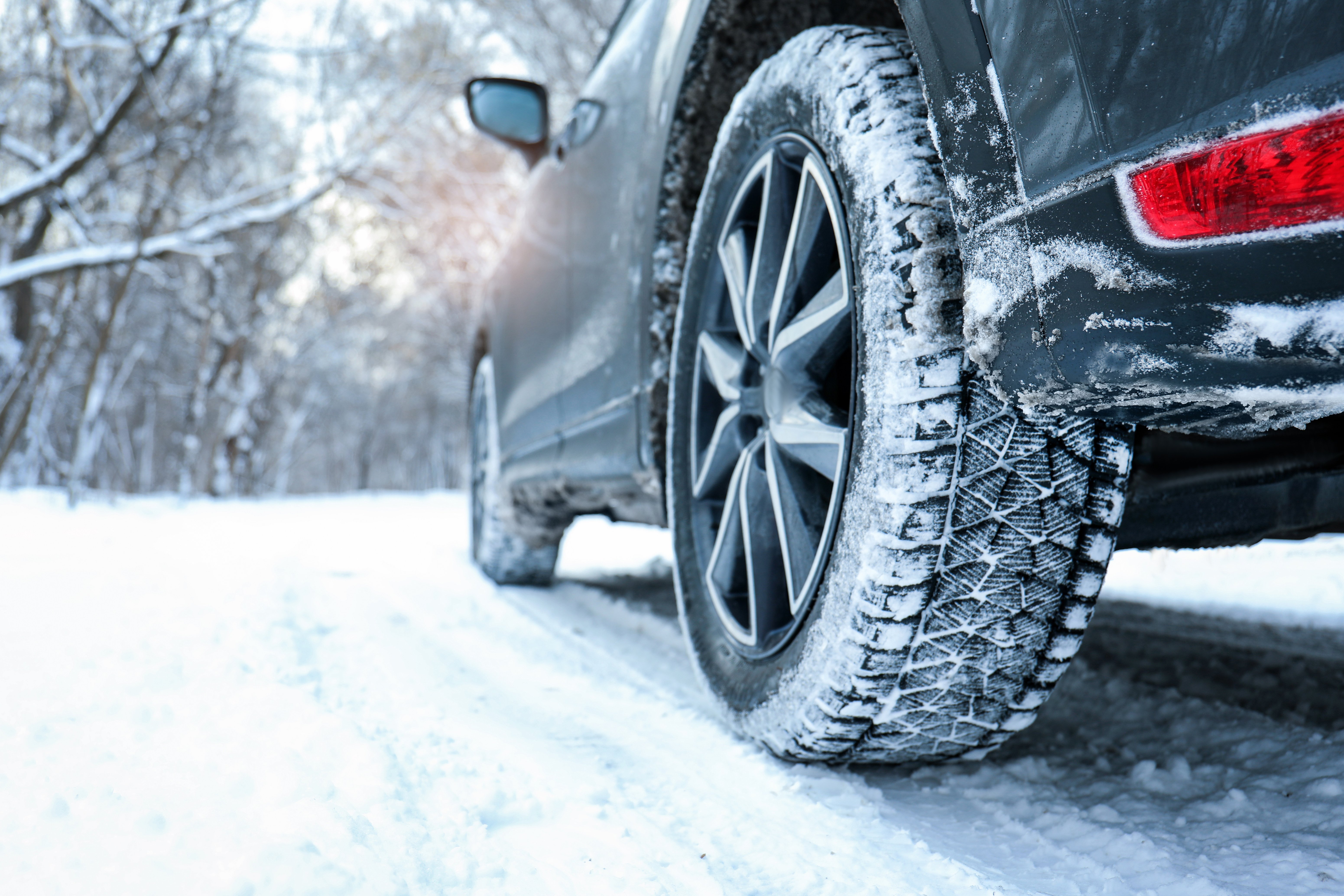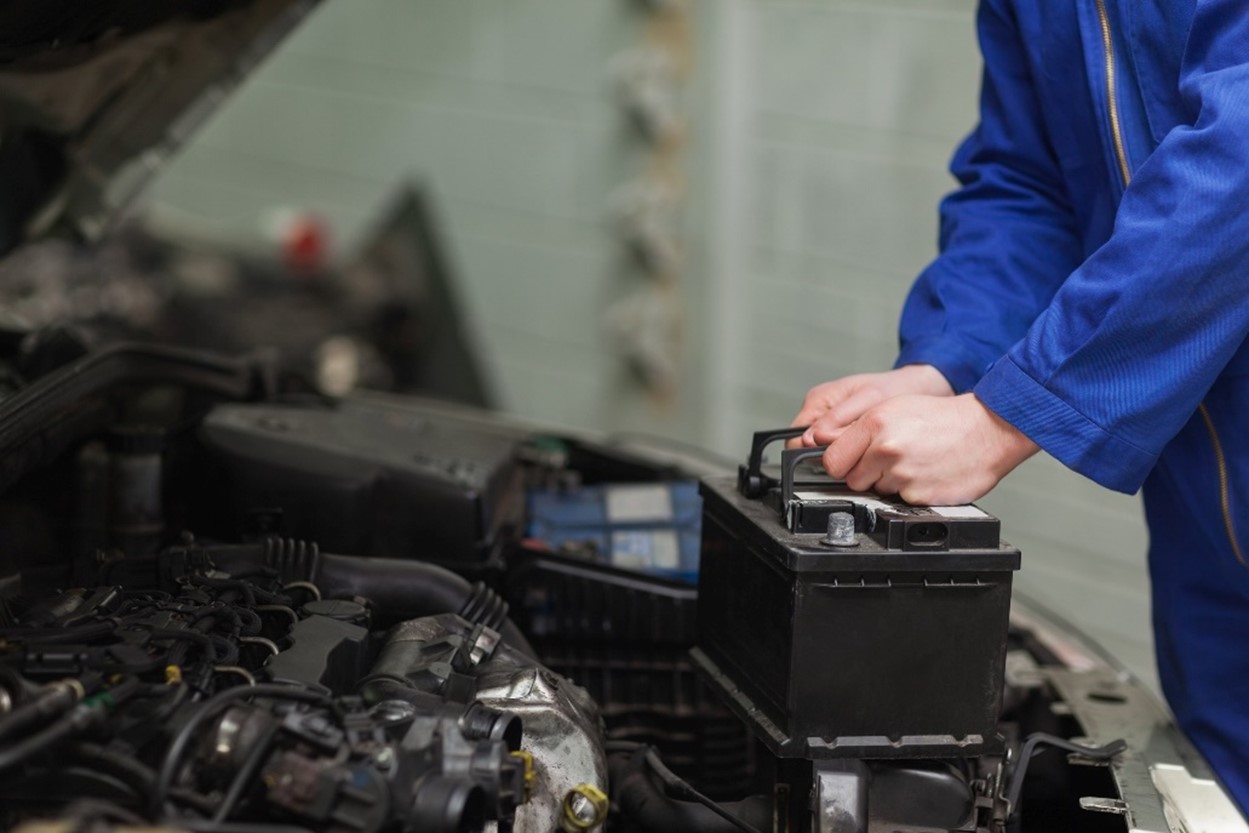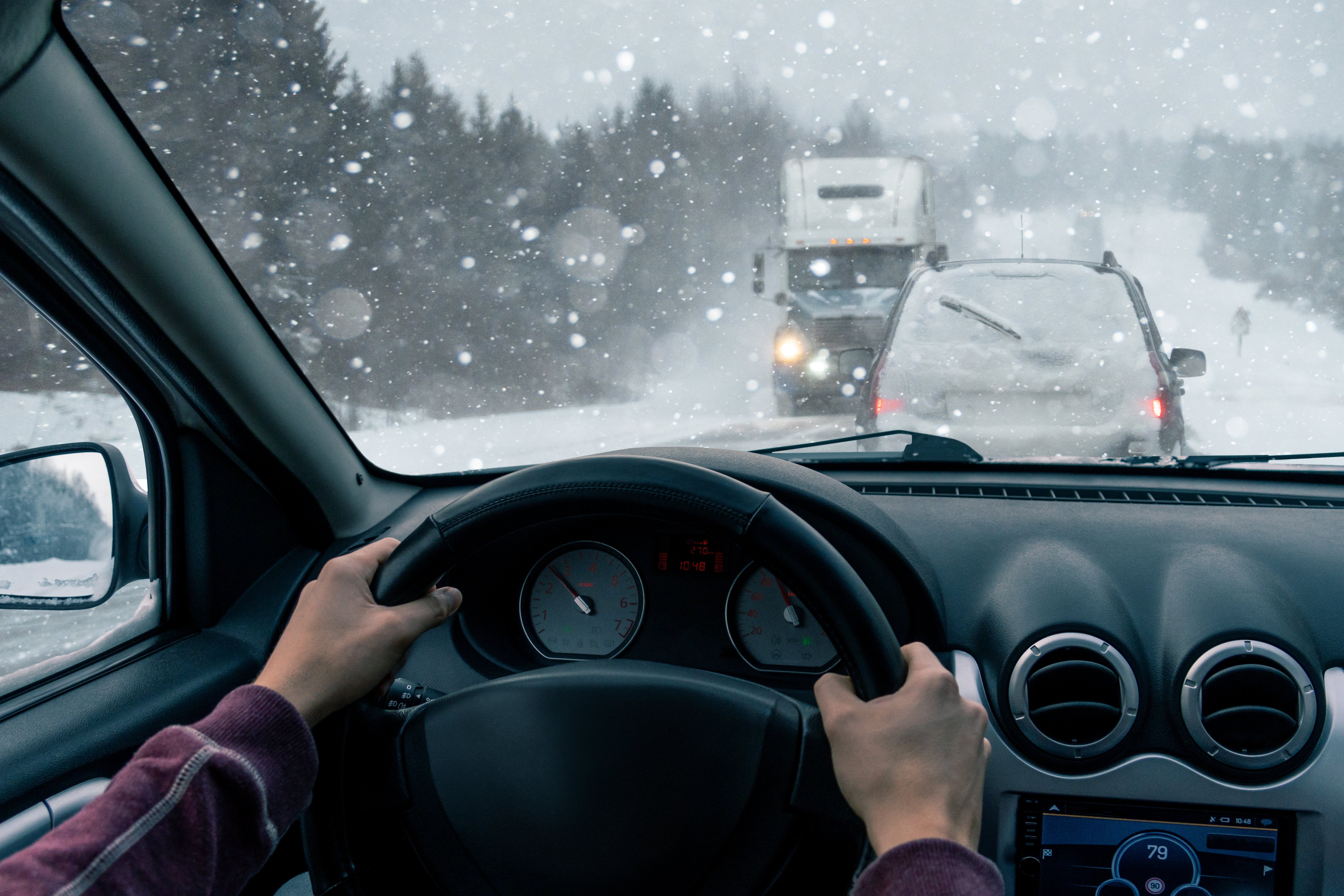Winter presents its own unique set of challenges when it comes to the safety and security of your vehicle’s occupants, as well as the protection and maintenance of the vehicle itself. And because weather conditions can shift suddenly in wintertime, being prepared is paramount.
As for winterizing your vehicle, the most important thing is regular maintenance year-round, says Peter Kreis, vice president of operations and automotive at CAA Saskatchewan. “If you follow your owner’s manual regularly, you need not worry about the seasons. And if you haven’t had the car checked out thoroughly by a mechanic in a year or more, go do it!” How you prepare for winter depends on your driving habits and weather conditions. If you hardly leave the city, you won’t need to plan the same way as someone who drives 1,000 kilometres through the wilderness. But either way, don’t allow winter to catch you by surprise.
1. Pre-Winter Prep
Ensure that your vehicle is in top shape and will make it through the winter without leaving you stranded. “Have your mechanic put your vehicle up on the hoist, pull the wheels off, and check the brakes, suspension, belts, hoses, and fluids,” says Kreis. “You want to catch problems now because components, as they wear, become more brittle when the mercury drops.” Designated technicians of CAA’s Approved Auto Repair Services™ (AARS) program can provide you with an unbiased evaluation of the condition of your vehicle, as well as recommendations on necessary repairs. The premium-quality service by these certified mechanics includes a 100-plus-point inspection and a thorough, accurate, and objective report.
2. What to Watch For
A regular visual once-over is one of the best ways to catch an issue before it becomes a problem—you can actually do this every day before you drive out. This is important year-round and even more so in winter. “Keep your eyes open for little things, like a leak on the driveway when you’re pulling out,” says Kreis. “It’s the same thing with tires. When you walk up to the car, be mindful of whether one tire looks low in pressure compared to the other tires. Look for any kind of cracking or cuts that can often happen from sidewall damage due to potholes.” It’s a good idea to change your wipers once a year. That way, you won’t have to deal with a sudden malfunction at an inopportune time. If you regularly drive in extreme ice and snow conditions, consider winter wipers, which are made with sturdier frames and thicker rubber. Check fluid levels at least every two months, year-round, and have on hand a bottle of windshield cleaner rated for extreme cold.
3. Tires
Check the pressure: Because tires lose about one psi of pressure for every 5°C drop, make it a habit to measure pressure frequently including the spare tire. Be careful not to over or underinflate, which can cause premature wear and negatively impact performance.

All-season vs. winter tires: Yes, the name “all-season” suggests you can use those tires year-round. But let’s be clear. “Winter tires are made from a softer compound that grips the road better once the temperature goes below 7°C,” says Kreis. “The stopping distance and control on ice is another very big difference. Winter tires yield up to 30 percent better traction in snow and ice conditions. All-season tires are made from a harder rubber compound, so they tend to freeze up and go more solid the colder it gets.” Not sure which ones you currently have? Winter tires have the three-peak mountain snowflake symbol on the sidewall, while all seasons feature M+S, for mud and snow.
Contact a professional: When it comes to researching and buying tires, don’t just grab something off an online marketplace. “See a tire shop or somebody who handles tires on a regular basis to guide you in the right direction,” says Kreis. Also, consider buying rims for your winter tires to prevent the wear and tear that comes with switching them out. Make sure the load and speed rating match the manufacturer’s specs. “Never go under that. You can go above, but you can’t go below,” says Kreis. “It’s especially important with an EV.” Electric vehicles tend to be much heavier and produce instant torque, so the rubber has to be able to meet tougher demands.
When should you install your snow tires? You should install your snow tires once the temperature is consistently 7°C or colder. “I don’t recommend you wait until the first snowfall because that’s when everybody wants them done,” Kreis says. You can switch back to your all-season tires in the spring once the weather is above 7°C.
Check your tread depth: Of course, no winter tire is worth its salt if the treads are worn down. Treads should be no less than 2/32 of an inch. You’ll find plenty of tips and tricks online about testing the depth with quarters, but to measure accurately, you need a tire depth gauge. Or the next time you’re getting your tires switched out, simply ask the technicians and have them check for any cracks, bald spots, and missing chunks, too.
Read this article for more information: 3 Reasons Why Winter Tires Work.
4. Battery Care
Check your battery and charge system: Pay attention to the sound your vehicle makes when you start it up. If it sounds different than usual—say, with a slower whirring—get it checked, advises Kreis. Notice a dimming of your dash lights or the fan has slowed down a bit? “It’s probably a good idea to go and get your battery and charge system checked,” he says. If you’re comfortable doing so, pop the hood and examine the battery. You may notice some white powdery buildup on the terminal posts. It can be cleaned off, notes Kreis. “That’s just the discharge from the battery itself; it’s not acid.” And while you’re there, check to see if your cables are loose. “It’s easy enough to just tighten them up.” The next time you bring your vehicle in for an oil change or servicing, have your mechanic do a load test on the battery. “You’ll know exactly what your battery condition is and if you can anticipate any issues,” says Kreis. Have your battery checked to ensure it’s operating at full capacity, especially if it’s more than three years old.
Here’s an informative article entitled, 6 Warning Signs You Might Have a Dead Battery.

Use a battery maintainer/tender: If you drive less in winter or will be away for an extended period, consider using a battery maintainer, also known as a tender. “A battery tender is something you can attach to your battery that provides a low-voltage charge to keep your battery charged up when you’re not using it,” explains Kreis. Charge your battery even when your vehicle is parked, say, for two weeks (while away on vacation) or in long-term storage. With the fully automatic CAA Battery Tender, you can eliminate costly repairs and avoid inconvenient vehicle downtime. This product is perfect for those who drive their vehicle rarely or not at all during the winter months. Available at CAA Battery Depot.
Use a block heater: When the temperature is below approximately –15˚C, battery voltage drops significantly. If your local temperature is regularly below –15˚C or thereabouts, consider a block heater. Chances are you’re already using a block heater if you live in Saskatchewan. It’s a small unit installed on the block of the engine which warms the engine and oil, so the battery doesn’t have to work as hard at start-up. If you already have a block heater, make sure the cord is in good shape and, while in storage over the summer, hasn’t been chewed by rodents.
EV battery pack: An EV’s battery pack exhibits similar decreases in output in cold environments. When the vehicle is plugged in, activating the preconditioning function (if available) heats the battery, allowing it to operate more efficiently, and results in decreased range loss. This preconditioning will also bring the vehicle’s interior to a comfortable temperature and result in less strain on the battery.
EV Range Test: Twice a year, the world’s largest EV range test is conducted jointly by the Norwegian Automobile Federation (NAF) and the digital automotive Motor Magazine (motor.no). Their most recent winter evaluation took place over two days in February 2023 with 29 of the most recent EV models. Each vehicle was driven up to 110 km/h on the same test route—a mix of city, mountain, and highway roads. Temperatures ranged between 0˚C and –10˚C. None of the vehicles met the advertised range parameters. In Europe, these are determined using the Worldwide Harmonized Light Vehicles Test Procedure (WLTP)—a global standard that measures the levels of pollutants, CO2 emissions, and fuel consumption of traditional and hybrid cars, as well as fully electric vehicles. Results of the EV Range Test.
Learn more about EV battery longevity and replacement costs. Take a tour of CAA’s EV Buyer’s Guide and #FindYourEV.

5. Stay Safe on the Road
Here’s some advice to help you stay safe on the road, no matter what Mother Nature throws your way.
Check road conditions: Before heading out, ensure you have the most up-to-date information on road conditions. The Saskatchewan Highway Hotline offers a handy online map, including information on closures and construction. Slow down during inclement weather and build more time into your plans if you don’t like being late. Never pass a snowplow. To learn about the Snow Zone and how to pass safely, visit the Ministry of Highways website.
Slow Down Move Over: It’s the law. In Saskatchewan, when approaching tow trucks, police or firefighters, or emergency medical services personnel stopped on the highway with emergency lights flashing. Motorists must slow to 60 km/hour unless they’re on the opposite side of a divided highway. The same law applies for highway work zones and construction crews. Being aware of emergency vehicles, tow trucks, snowplows and construction zones is more challenging during winter, when blowing snow, slush, whiteouts, fog, gas-exhaust clouds, frosted windows, and darkness from shorter days all make it harder for motorists to monitor road hazards. So, to reduce the risk of collisions between motorists and first responders, CAA Saskatchewan has implemented the Safety Cloud® HAAS Alert system for its Roadside Assistance Regina Fleet. When a CAA tow truck is providing roadside assistance, the system will send a warning to users of popular traffic apps such as Waze and to the navigation systems in vehicles manufactured by the Stellantis Group, which includes Dodge, Chrysler, Jeep, RAM, and Fiat. Drivers will receive the alert “CAA Saskatchewan On Scene Slow Down and Move Over,” giving them more time to reduce speed, keeping them—and first responders—safe. Visit caask.ca/safety for more information.
Practise defensive driving: If you start skidding, don’t pump the brake. Keep steady pressure on the brake and steer the car to keep it straight. If visibility is reduced due to blowing snow, slow your vehicle and turn on your four-way flashers. “If you can’t see the edge of the road, it’s time to find a safe place to pull over and wait it out,” says Kreis. Learn the difference between front-wheel drive, rear-wheel drive, all-wheel drive, and four-wheel drive here.
Be prepared for emergencies: Keep a roadside safety kit in your vehicle for unexpected emergencies— snow brush, ice scraper and shovel, vehicle owner’s manual, CAA Membership Card for Roadside Assistance information, cables and/or booster pack, first aid kit, lighter and/or matches, pencil and notebook, flashlight with extra batteries, drinking water and food (protein bars, etc.), flares, warning triangles or reflectors, mobile phone, power bank, and cords for charging phone, and blankets, boots, hats, mittens (for each passenger). Roadside safety kits are available at all CAA Stores and online at caask.ca/shop.
What should you do if you become stranded? If you become stranded while waiting for help to arrive from CAA Roadside Assistance or from family or friends, ensure your vehicle is out of harm’s way. If you run your vehicle to stay warm, make sure you can keep the exhaust pipe clear. It’s a good idea to keep a minimum of half tank or full tank of fuel when driving in the winter. You’ll ward off running empty and the fuel will provide added weight to your vehicle for increased driving stability.
Check out these past blog articles for more information: 6 Things to Do When You’re Car is Stuck in the Snow, Driving in the Country? CAA’s Got Your Back
Remove distractions: Pedestrians, even if the street ahead seems quiet, be alert, put your phone and gaming devices away, and avoid distracted walking. Drivers, eliminate all distractions, including the use of mobile phones, drinking beverages, putting on makeup, loud music, and long conversations with passengers.
Keep an eye out: Always make eye contact with other road users, notably at crosswalks. Pedestrians should use the STOP, LOOK, THINK, LISTEN rule of thumb. Drivers must yield to pedestrians at marked crosswalks and are required to come to a complete stop at red lights and stop signs.
Be seen: Pedestrians should wear bright, reflective overwear to be spotted easily. Drivers should familiarize themselves with their vehicle’s features and settings to avoid becoming a “phantom vehicle”—an automobile being operated in the dark or low-light conditions without the proper exterior lighting activated. Be mindful of the following:
- Automatic headlights only work if you set them on ‘automatic.’
- A bright dashboard doesn’t always mean that your headlights and taillights are on.
- Daytime running lights don’t give you enough light to drive safely in the dark or in bad weather.
Don't forget about our commitment to Road Safety!

